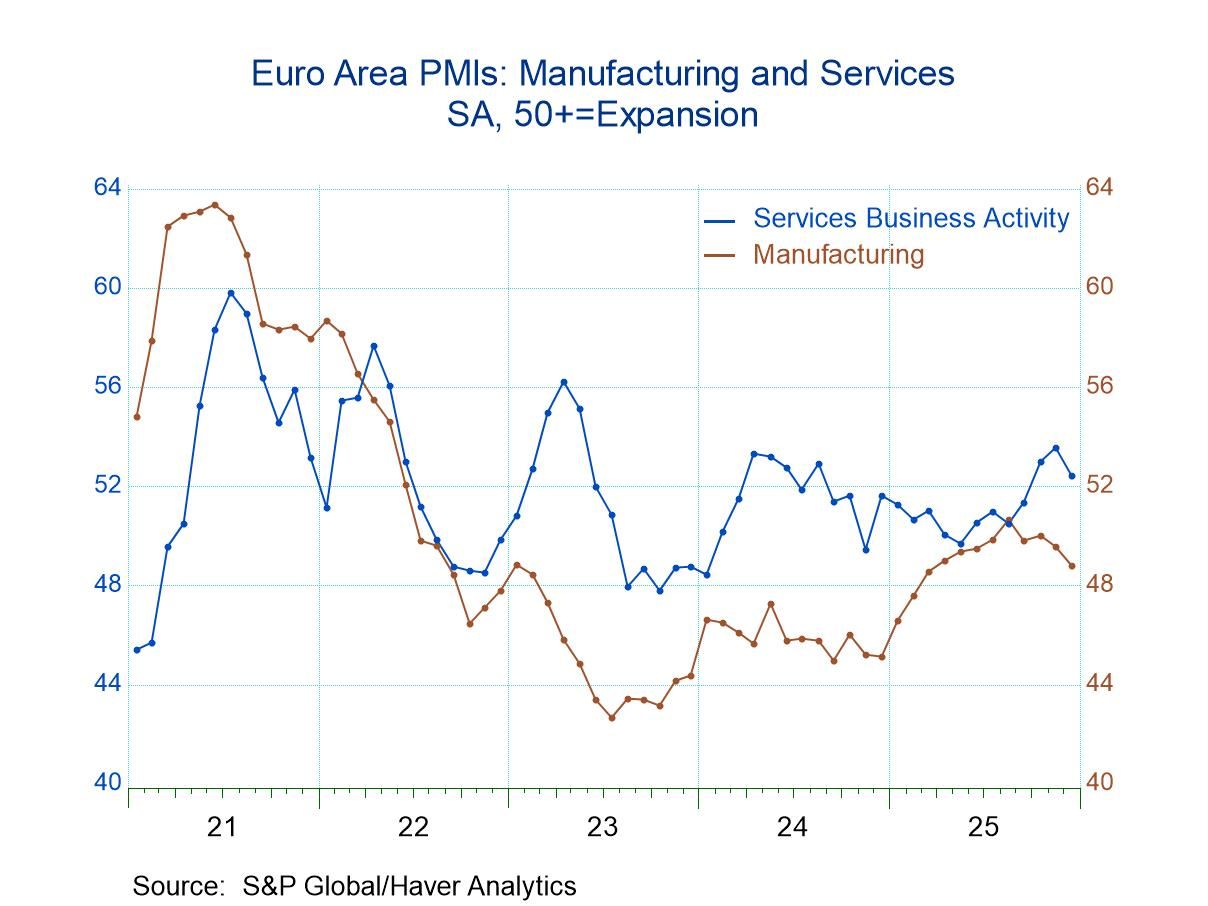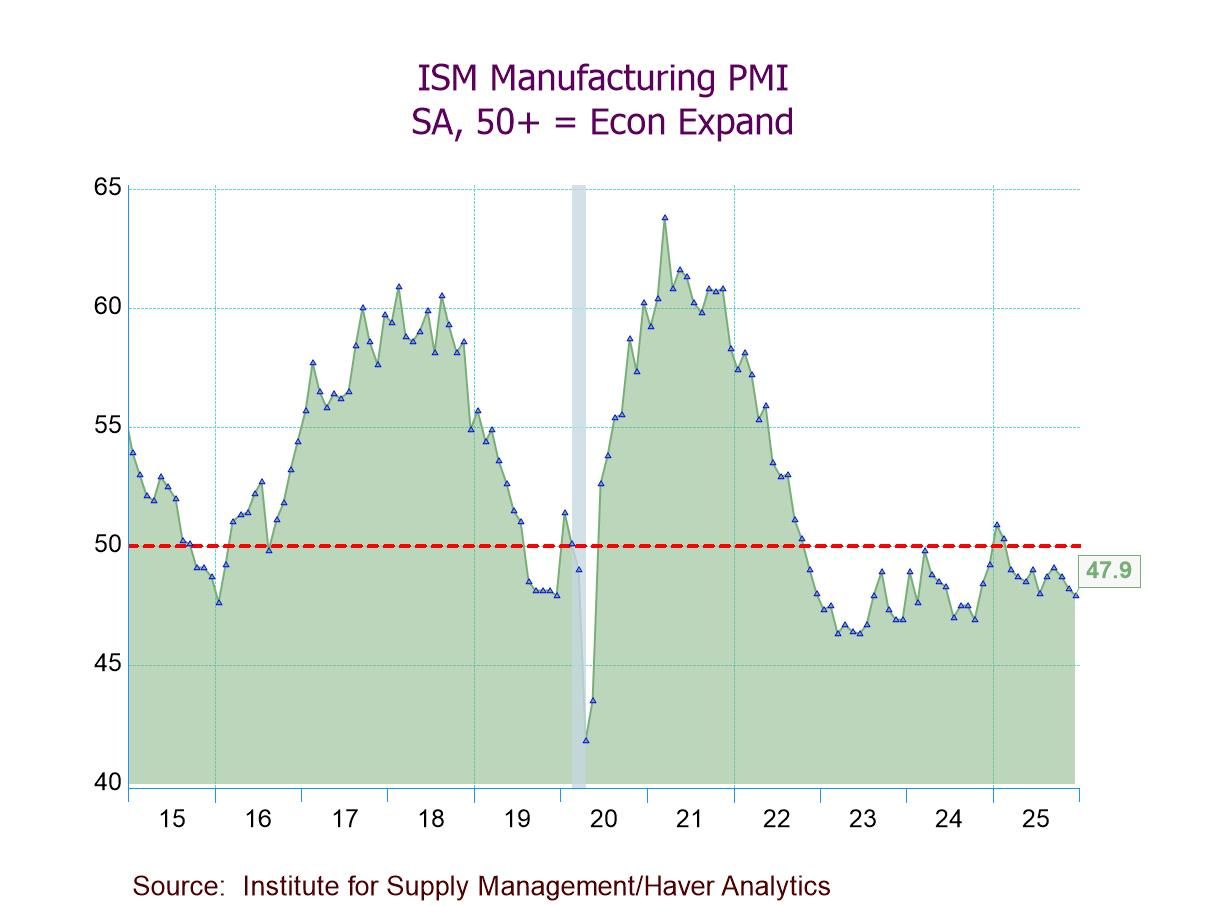 Global| Oct 31 2007
Global| Oct 31 2007US GDP Growth Boosted Again by Improved Trade Deficit
by:Tom Moeller
|in:Economy in Brief
Summary
U.S. real GDP growth last quarter of 3.9% (AR), in the advance report from the Commerce Department, was higher than expectations for 3.2% growth. The contribution to growth from net export improvement was another 0.9 percentage points [...]

U.S. real GDP growth last quarter of 3.9% (AR), in the advance report from the Commerce Department, was higher than expectations for 3.2% growth.
The contribution to growth from net export improvement was another 0.9 percentage points after the 1.3 percentage point contribution during 2Q. Exports boomed at a 16.2% annual rate (9.6% y/y) while import growth of 5.2% (2.9% y/y) reflected the slowdown in U.S. final demand growth.
Growth in final sales to domestic purchasers at 2.5% (AR) wasn't bad following 2.1% 2Q growth and 1.7% growth in 1Q, but the likely increase for all of this year around 2.0% will lag last year's advance of 2.7% and 3.3% in 2004.
The shortfall in domestic demand growth was led by a whopping 20.1% AR (-16.4% y/y) decline in residential investment. It was near the top quarterly rate of decrease during this down cycle in the housing sector.
Firm growth in business fixed investment was again a mainstay of overall domestic demand. It rose 7.9% AR (4.8% y/y) rate after an 11.0% surge in 2Q. Spending on structures, in late cycle fashion, led that increase and rose 12.4% AR (12.8% y/y). Spending on equipment & software also was firm at 5.9% (AR), the strongest since 1Q '06, but the y/y gain of 1.4% was reduced by weak growth or q/q declines from 2Q '06 to 1Q '07.
Growth in real personal consumption expenditures also wasn't bad at 3.0% (3.0% y/y) which was double growth during 2Q. Growth in spending on durable goods amounted to 4.4% (4.7% y/y) as 11.8% growth in spending on furniture & appliances offset a 5.4% drop in spending on motor vehicles. Spending on other durable goods boomed at an 11.7% rate. Nondurable goods spending turned in a 2.7% (2.4% y/y) advance and services spending growth was steady at 2.9% (3.0% y/y).Inventories added just 0.4 percentage points to GDP growth after a 0.2 point contribution during 2Q. That contribution has been negative this year.
The GDP chain price index rose just 0.8% led by declines in both the nonresidential and residential price indexes. Consumer prices rose only 1.7%, held back by the decline in gasoline prices, while less food & energy it rose just 1.8% (1.9% y/y).


| Chained 2000$, % AR | 3Q ' 07 Advance | 2Q '07 | Y/Y | 2006 | 2005 | 2004 |
|---|---|---|---|---|---|---|
| GDP | 3.9 | 3.8 | 2.6 | 2.9 | 3.1 | 3.6 |
| Inventory Effect | 0.4 | 0.2 | -0.4 | 0.1 | -0.2 | 0.4 |
| Final Sales | 3.5 | 3.6 | 3.0 | 2.8 | 3.3 | 3.3 |
| Foreign Trade Effect | 0.9 | 1.3 | 0.9 | -0.1 | -0.2 | -0.7 |
| Domestic Final Demand | 2.5 | 2.1 | 2.1 | 2.7 | 3.3 | 3.8 |
| Chained GDP Price Index | 0.8 | 2.6 | 2.3 | 2.6 | 1.7 | 2.1 |
Tom Moeller
AuthorMore in Author Profile »Prior to joining Haver Analytics in 2000, Mr. Moeller worked as the Economist at Chancellor Capital Management from 1985 to 1999. There, he developed comprehensive economic forecasts and interpreted economic data for equity and fixed income portfolio managers. Also at Chancellor, Mr. Moeller worked as an equity analyst and was responsible for researching and rating companies in the economically sensitive automobile and housing industries for investment in Chancellor’s equity portfolio. Prior to joining Chancellor, Mr. Moeller was an Economist at Citibank from 1979 to 1984. He also analyzed pricing behavior in the metals industry for the Council on Wage and Price Stability in Washington, D.C. In 1999, Mr. Moeller received the award for most accurate forecast from the Forecasters' Club of New York. From 1990 to 1992 he was President of the New York Association for Business Economists. Mr. Moeller earned an M.B.A. in Finance from Fordham University, where he graduated in 1987. He holds a Bachelor of Arts in Economics from George Washington University.






